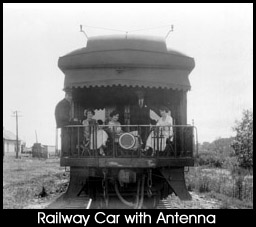The CNR could already boast of being among the most qualified of companies to embark on this new enterprise. It operated the country’s largest telegraph system. This grid of “long lines” held the key to establishing a long-distance network, simultaneously carrying programs to any station plugged into this wire web.
As well, the CNR and its predecessors had been involved in a variety of wireless experiments. In 1902, Sir Ernest Rutherford, then a physics professor at McGill University, sent what was reputedly the world’s first wireless telegraph message from a moving train while on board the Grand Trunk’s International Limited as it raced from Toronto to Montreal.

In the summer before Thornton’s arrival, the CNR Telegraph Department had participated in a series of radio demonstrations in and around Toronto. Working with the Canadian Marconi Company, the CNR had broadcast special programs from its Lake Ontario steamship, the S.S. Dalhousie City, to a radio-equipped CNR coach on display at the Canadian National Exhibition. Other experimental broadcasts were made to CNR passenger trains operating in the Montreal-Ottawa-Toronto triangle. Listeners wrote to the CNR to say they had heard these programs more than 100 miles away.
